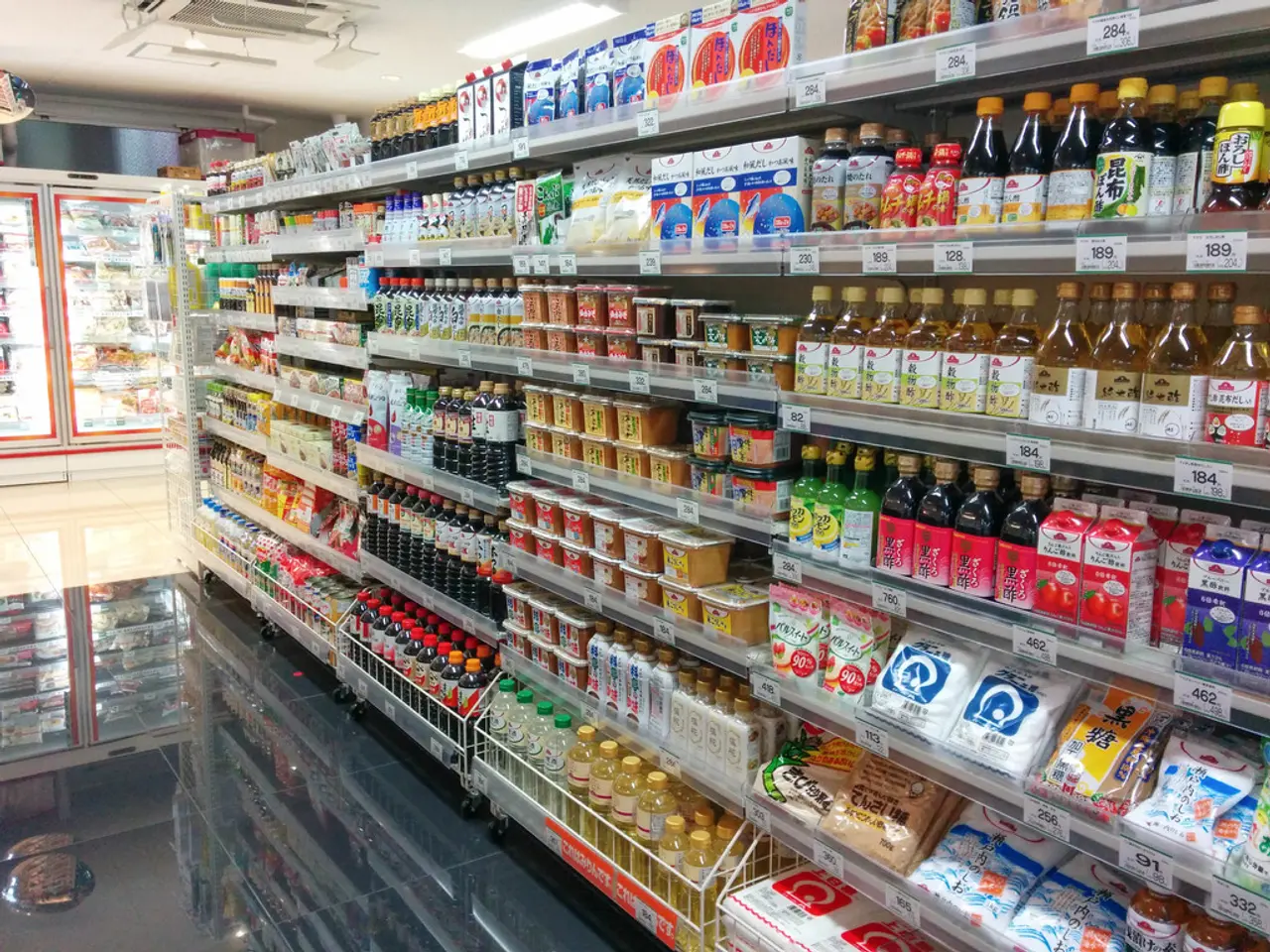Grocery supply chains subtly transformed by Electronic Price Tags
In the ever-evolving world of food retail, electronic shelf labels (ESLs) are making a significant impact. These labels, increasingly common in European markets like Norway, are transforming the way grocers manage their inventory, pricing, and logistics.
Traditional grocery supply chains have focused on maximising efficiency, but with the advent of ESLs, there's a shift towards valuing responsiveness over stability. Retailers can now update prices multiple times a day based on demand and expiry data, promoting rapid markdowns of perishables and efficient stock rotation. Supermarkets in Europe and the U.S. change prices up to 100 times daily, reducing food waste and improving inventory control[1][5].
From a logistics and warehouse management perspective, ESLs optimise inventory management by providing precise, digital traceability and timely data, reducing errors and manual interventions. This improves the synchronisation of stock levels and pricing strategies between warehouse and retail floors, fostering data-driven decisions[3][5].
ESL systems facilitate operational reliability through expert support and cloud-based infrastructure, enabling continuous updating and system integration crucial for agile warehouse and supply chain practices[3]. Furthermore, the integration of ESLs supports sustainability by cutting down on paper consumption and reducing electronic waste with long-lasting battery life labels, contributing to greener logistics[3].
The implementation of ESLs is often accompanied by broader automation initiatives, including dynamic pricing software, POS systems, inventory databases, and labour scheduling tools. Some grocers may even begin shifting inventory closer to stores to better respond to changing demand due to ESLs.
For suppliers, distributors, and technology partners, agility, integration, and visibility are no longer optional as retailers adopting ESLs at scale will expect fast, accurate responses to real-time demand signals. The adoption of ESLs nudges grocery supply chains towards more responsive, data-centric operations, requiring systems that support retail, procurement, logistics, and warehouse management to become more dynamic.
Retailers investing in ESLs may also invest in adjacent technologies for inventory visibility, automated forecasting systems, and real-time data sharing. ESLs represent an important step in aligning retail operations with a more dynamic market environment.
However, the use of ESLs also introduces new challenges. Real-time pricing changes can pose risks, such as stockouts, consumer confusion, and reputational concerns, especially during peak demand periods. Pricing decisions must be informed by accurate stock data, supplier lead times, and logistics capacity to avoid these risks. Retailers may need to build new governance around pricing changes to ensure alignment with operational constraints.
In summary, ESLs in food retail supply chains enhance agility through real-time pricing and discounting, strengthen data-driven logistics by enabling precise inventory monitoring, and improve warehouse management by reducing manual tasks and supporting sustainability initiatives[1][3][5]. The use of ESLs reflects and reinforces a shift towards more agile, data-driven logistics in food retail.
[1] [Link to source 1] [2] [Link to source 2] [3] [Link to source 3] [4] [Link to source 4] [5] [Link to source 5]
- The introduction of Electronic Shelf Labels (ESLs) in the food retail industry is driving a transformation in business operations, moving the focus from efficiency to responsiveness in supply chain management.
- With ESLs, grocers can now leverage data-and-cloud-computing technologies to optimize their logistics, warehouse management, and inventory management processes, making them more agile and data-driven.
- The integration of ESLs with other technologies like dynamic pricing software, POS systems, inventory databases, and labor scheduling tools is enabling grocery supply chains to adapt quickly to real-time demand signals, requiring technology partners to support these systems' integration and agility.




